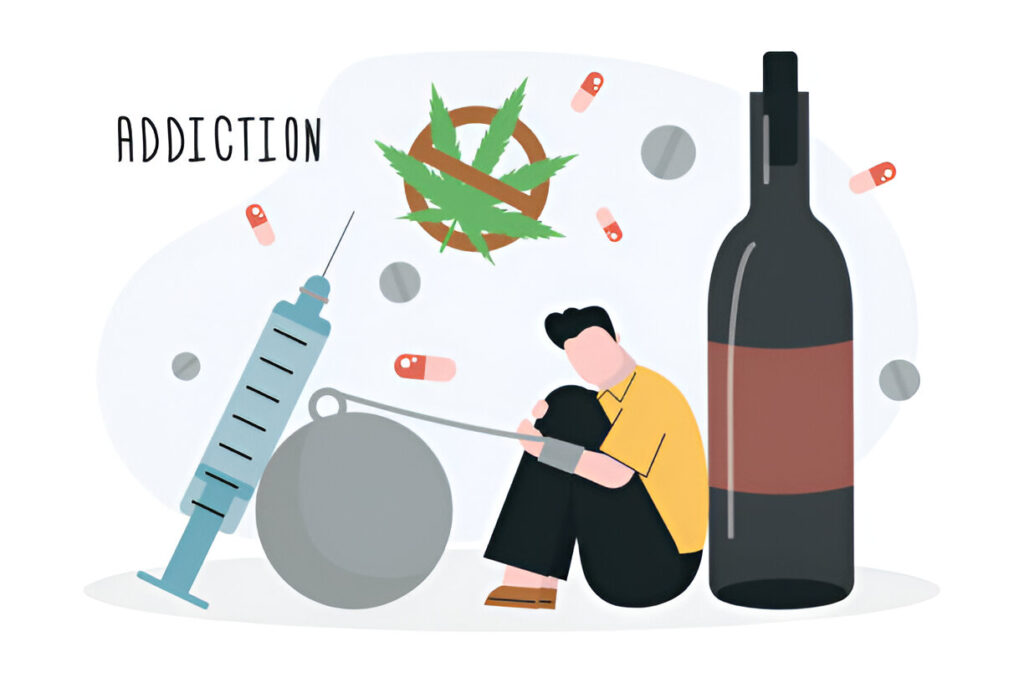There are many forms of addiction, with the most common being alcohol and drug. Naturally, the latter can also come in many forms. But what are the similarities and differences between them?
It’s important to know the key differences and similarities between varying forms of addiction as if you know someone living with the condition, there’s no one size fits all approach.
Visit the best alcohol and drug rehab clinics and you’ll see treatment plans that are tailored to specific conditions and even each individual, as everybody has a different relationship with addiction and recovery.
However, there are some broader similarities and differences between alcohol and drug addiction…
Similarities Between Alcohol and Drug Addiction
1. Both Are Chronic Diseases
It’s important to note that both are chronic diseases that involve compulsive usage, despite the consequences that they carry.
They alter the brain’s chemistry and trigger the reward system within it that encourages our brain’s to become dependent on them. Which makes it very difficult to quit.
2. Both Affect Physical and Mental Health
Both have a significant impact on our health, both physically and mentally. Alcohol use will have an impact on our liver, heart and cause neurological damage, while drug addiction can also cause organ damage, respiratory problems and increase the risk of infectious diseases.
They can both heighten anxiety, depression and cognitive impairment, with people often turning to the substances to cope, creating a vicious cycle.
3. Social and Personal Consequences
The impact both can have on our social and personal lives is significant, causing problems in the likes of relationships, employment, finances and overall quality of life.
This can lead to many more problems and have a knock-on effect to the distress of family members and friends too, who essentially may be caught in the firing line.
4. The Risk of Tolerance and Withdrawal
With continued use, both alcohol and drugs lead to tolerance, meaning that higher doses are needed to achieve the same effect. This increases the risk of dependence and withdrawal symptoms when the substance is reduced or stopped. Alcohol withdrawal can be life-threatening, causing seizures and delirium tremens, while drug withdrawal varies depending on the substance but can include severe cravings, agitation, and physical discomfort.
5. The Role of Genetics and Environment
Genetics play a significant role in addiction, with studies showing that individuals with a family history of substance use disorders are at a higher risk. Environmental factors, such as trauma, stress, and peer influence, also contribute to both alcohol and drug addiction.
Differences Between Alcohol and Drug Addiction
1. Legal Status and Accessibility
Naturally, one of the biggest differences is where the law lies. Alcohol is perfectly legal in the UK, and indeed most countries, to consume. It’s also widely available to consume in the likes of bars, pubs, supermarkets and off licences.
On the flip side, drugs are illegal and carry consequences for possessing and consuming.
That does mean that when it comes to alcohol, people are often less aware they have developed an addiction and the dangers of it are often underestimated, while there’s much more of an awareness around the dangers of drugs, due to the stigma around it,
2. Social Acceptance and Perception
It’s fair to say that alcohol is a part of everyday culture and very much ingrained in society. There’s a social acceptance that isn’t really going anywhere anytime soon. This normalisation can make it more difficult to recognise they have a problem. In fact, heavy drinking is often encouraged and laughed about. There are only small corners of society where that’s the case when it comes to drugs.
3. Patterns of Use
What you’ll tend to find is that drug addiction can escalate far quicker than alcohol addiction. The latter tends to develop over time, starting socially before progressing into something much heavier.
With drugs, particularly the likes of heroin and other opioids, including prescription, as well as drugs like methamphetamine can develop much more rapidly due to the intense effects they provide to people. This can lead to dependency much more quickly, as well as increase the risk of overdose.
4. Withdrawal Severity and Treatment Differences
While both alcohol and drug withdrawal can be severe, alcohol withdrawal is particularly dangerous. Severe alcohol withdrawal can lead to delirium tremens (DTs), a potentially fatal condition characterised by confusion, hallucinations, and seizures. This often requires medical detoxification in a supervised setting.
Drug withdrawal varies depending on the substance. Opioid withdrawal, for example, is intensely uncomfortable but rarely fatal, while stimulant withdrawal can cause severe depression and suicidal thoughts.
Treatment for alcohol and drug addiction also differs in some aspects. Medication-assisted treatment (MAT) is more commonly used for drug addiction, particularly for opioids, with medications like methadone and buprenorphine helping to reduce cravings. For alcohol addiction, medications such as disulfiram and naltrexone can be used, but behavioural therapies and counselling remain the primary treatment methods.
5. Risk of Overdose
Finally, both alcohol and drug addiction carry a risk of overdose, but the mechanisms differ. Alcohol poisoning occurs when excessive alcohol consumption suppresses breathing and gag reflexes, leading to unconsciousness or death. Drug overdose, particularly with opioids and stimulants, can cause respiratory failure, heart complications, and seizures.
The risk of overdose is generally higher with illicit drugs, especially when mixed with other substances. The presence of fentanyl, a potent synthetic opioid, in many street drugs has significantly increased overdose fatalities in recent years.
In addressing the complexities of addiction, it’s crucial to recognize the importance of specialized treatment options. For those struggling with alcohol addiction, seeking help from professionals who understand the unique challenges of this condition can make a significant difference. This rehab center offers comprehensive programs tailored to the needs of individuals battling alcohol dependency, providing a supportive environment for recovery. By focusing on both the physical and psychological aspects of addiction, individuals can work towards a healthier, more fulfilling life. Understanding the nuances between alcohol and drug addiction is essential in choosing the right path to recovery, ensuring that each person receives the care and attention they need.



